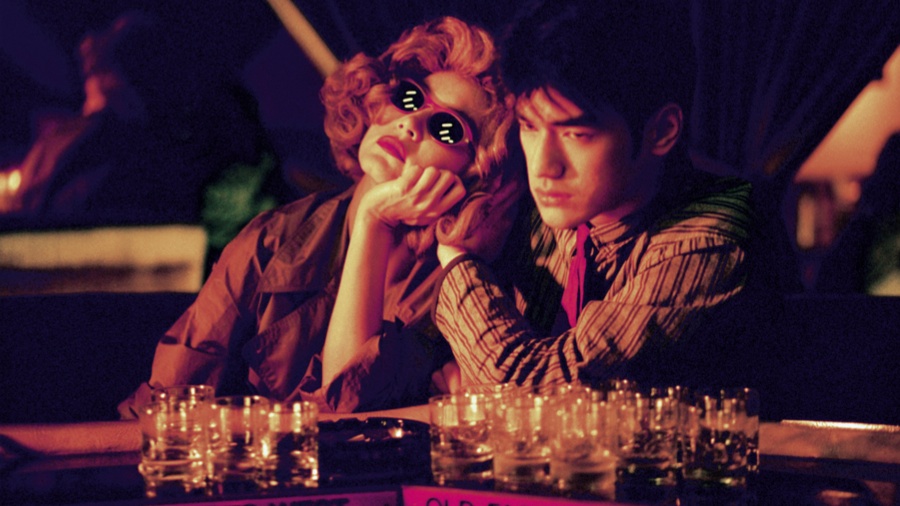Often unrecognised in a market saturated with martial arts pictures, Chinese cinema has a lot to offer across a broad range of genres. Just over a hundred years since the first film was made in 1905, Chinese cinema has continued to evolve, bringing everything from sharp action thrillers and epic war chronicles to heart-wrenching love stories and modern fairytales.
From opening up the world of Chinese culture to traversing the path of the country’s history, these five films should be top of your watchlist for their standout plots and accomplished cinematography.
Crouching Tiger, Hidden Dragon (2000)
One of the household names of Chinese cinema, Crouching Tiger, Hidden Dragon is perhaps the most well known of all, and indeed among the top most influential foreign language films. The world-famous martial arts film epitomises the traditional culture of China, introducing the country’s Dynastic history and martial arts influences, as well as showing off many historical sights such as the Shaolin Temple in Luoyang, Henan.

Directed by Ang Lee, who has also worked on Life of Pi and Brokeback Mountain, the film beautifully captures a traditional quest, blending outstanding martial arts scenes with a dream-like musical score. Named after the Chinese idiom, which symbolises a place or situation that is full of unnoticeable masters, the film is full of twists and turns.
Chungking Express (1994)

Hailing from Hong Kong, Wong Kar-wai’s Chungking Express is a cleverly scripted film that unravels
multiple storylines, tying everything back together. From its cinematography and music to the fluidity of the plot, the whole film has a dream-like quality. The Chinese title translates to ‘Chungking Forest/Jungle’: a direct reference to life in a concrete jungle and more broadly a hint at the city’s turbulent past of emigration and industrial boom.
Ultimately it explores the stifling constrictions of the over-populated Hong Kong, with the characters fantasising about escaping or else immersing themselves in alternative identities. The whimsical quality of Mama and the Papas’ California Dreamin’ soundtrack and the charm of the lovesick characters makes the film all the more endearing.
Raise the Red Lantern (1991)
Set against a backdrop of 1920s China during the Warlord Era, Raise the Red Lantern follows the unfortunate path of a young woman who becomes the fourth wife of a wealthy lord. Adapted by Zhang Yimou (who also directed the 1994 much-accredited To Live) from the Su Tong novel, Wives and Concubines, the film outlines the ill treatment of women and serves to show their role in Chinese history, pitting the wives against one another to earn favour from their husband.

The recurring symbol of the red lantern is a subtle representation of the crushing patriarchy of the day, as well as the need for escape and acceptance longed for by so many women. It has since been adapted into an acclaimed ballet by the National Ballet of China.
In the Mood for Love (2000)

Another offspring of Wong Kar-wai, In the Mood for Love is a masterpiece of poetical cinema. Often referred to as “the Chinese answer to David Lean’s 1945 Brief Encounter”, the tale is one of romantic longing, overflowing with dazzling costumes, stunning cinematography and a haunting soundtrack. Conversely following two married people who find out their lovers are having an affair, as opposed to the other way round, the film pays close attention to the finer details, grasping a whole spectrum of emotions in such a lyrical way.
Spring in a Small Town (1948)
One of the earliest feature-length films, Spring in a Small Town, the quiet black and white drama by Fei Mu, is rather ahead of its time. Shortly after its release, the Communist revolution in mainland China somewhat disowned the tale, which observes the tensions between a married woman and her ex-lover.

Despite old loves coming and going, the longing and tenderness felt by the woman is touching, ensuring that the film strays away from a more typical soap opera storyline. The 2002 remake by Tian Zhuangzhuang is also a fine example of Chinese cinema.
Chinese cinema continues to grow and push boundaries, taking on its traditional heritage as well as its own approach to more Westernised themes of fantasy and action.
In the past year alone, sci-fi rom-com, The Mermaid, was released, rising to the era of a modern, social media-influenced, dystopian fairytale; as well Mojin: The Lost Legend, which is reminiscent of the thrilling quest of the Lord of the Rings triology; and even a follow up to Crouching Tiger, Hidden Dragon subtitled Sword of Destiny, has been unveiled, which continues the martial arts journey of its heroic characters.
Set to hit screens in China at the end of the year and the US in early 2017, The Great Wall has brought Chinese cinema right into the limelight. Boasting the highest budget of any film completely shot in China, with a weighty $135 million, the 3D sci-fi action-adventure blockbuster will offer a stellar cast led by Matt Damon and Andy Lau. It becomes the latest film in Zhang Yimou’s oeuvre but his first English-language film. Removing the language barrier for many can only further encourage this onto the screens of audiences worldwide.
These latest and upcoming outpourings are proof that Chinese cinema is only set to become more widespread beyond its own borders, to reach international audiences and tackle Hollywood.


